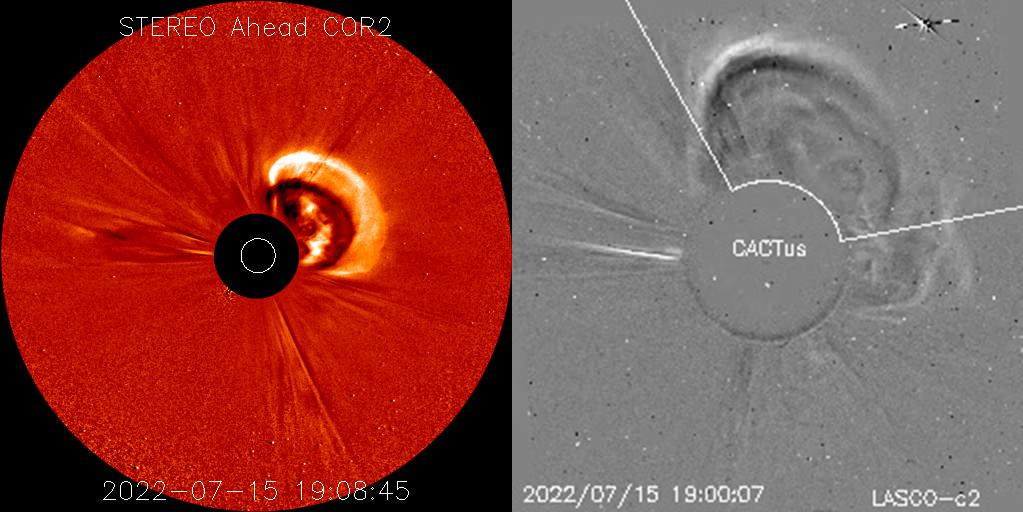Solar filaments are clouds of charged particles ("plasma") above the solar surface squeezed between magnetic regions of opposite polarity. Being cooler and denser than the plasma underneath and their surroundings, they appear as dark lines when seen on the solar disk and as bright blobs when seen near the solar limb (then they are called "prominences"). These features are not visible in white light, and require special filters such as in the Hydrogen-alpha (H-alpha) line in the red part of the solar spectrum at 656.3nm.
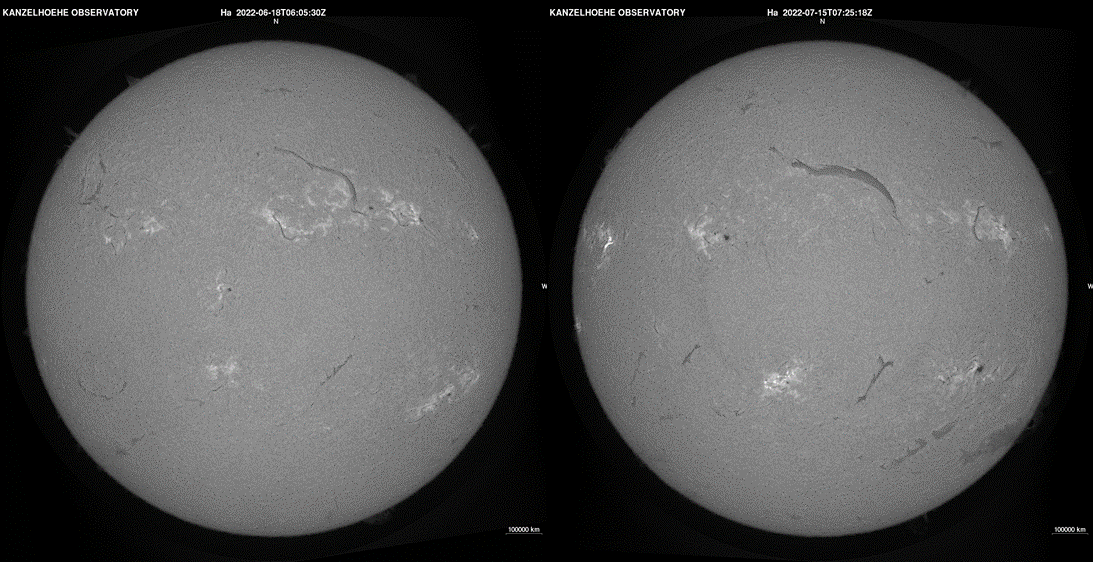
Starting around noon on 15 July, a filament in the Sun's northern hemisphere just west of the central meridian erupted. This concerned the same filament that developed a solar rotation ago, as discussed in this STCE newsitem. A comparison between 18 June and 15 July can be found above (Kanzelhöhe Observatory). Its length hadn't changed much over these weeks and was, just hours before the eruption, still comparable to the Earth-Moon distance (i.e. a length between 370.000 and 390.000 km). The GONG H-alpha imagery underneath show the eruption with about 3 hours interval. The "wiggling" of the Sun in the animation has nothing to do with the eruption, but is due to image processing as the images are provided by different GONG network stations. The eruption was observed too with the H-alpha telescope of the ROB/USET (see this animation). The H-alpha images show that the filament snapped near its middle, with portions flowing to the east and west along the neutral line ("border" between opposite magnetic fields). Also, a small portion of the east end of the filament survived the initial eruption, preferring to erupt by itself just a few hours later, on 16 July around 03:00UTC.
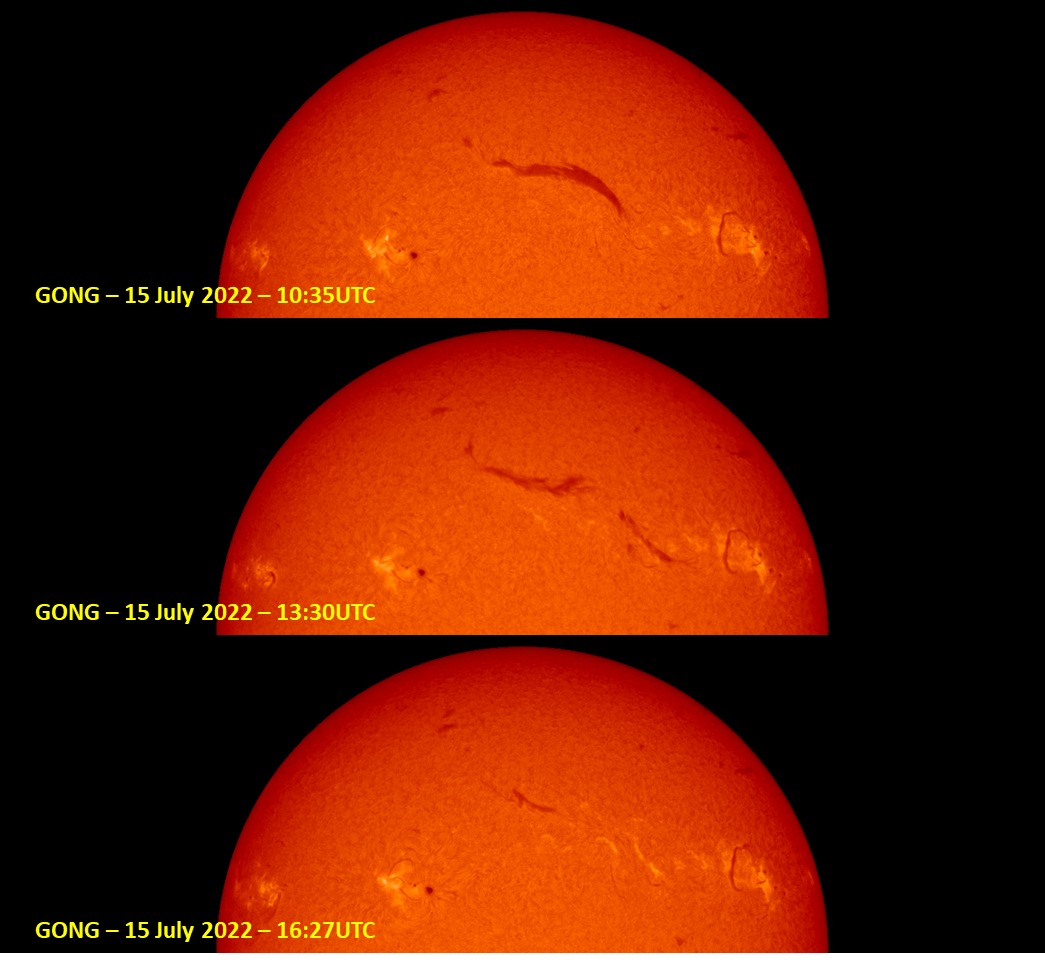
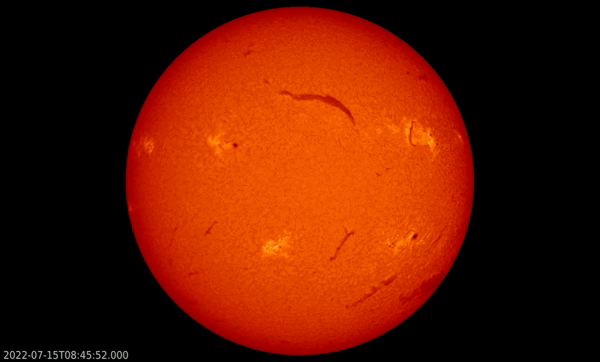
The eruption was also visible in extreme ultraviolet. STEREO-A is still trailing the Earth by about 25 degrees, and thus observed the eruption a little bit more from the side. Images taken by its EUVI 304 filter, showing the solar atmosphere at temperatures near 80.000 degrees, clearly reveal material being ejected into space (see the annotated images and animation underneath).

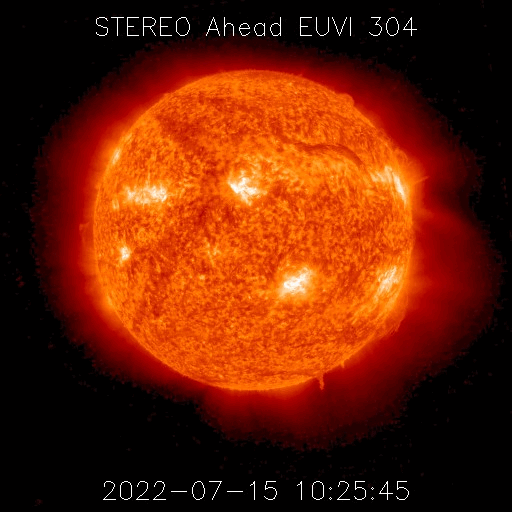
Interestingly, PROBA2/SWAP difference images (one image subtracted from the next) suggest that at least part of the material flowing to the west might have been captured by the magnetic fields of the spotless trailing portion of active region NOAA 3053, as if it was attracted by a magnetic whirlpool.
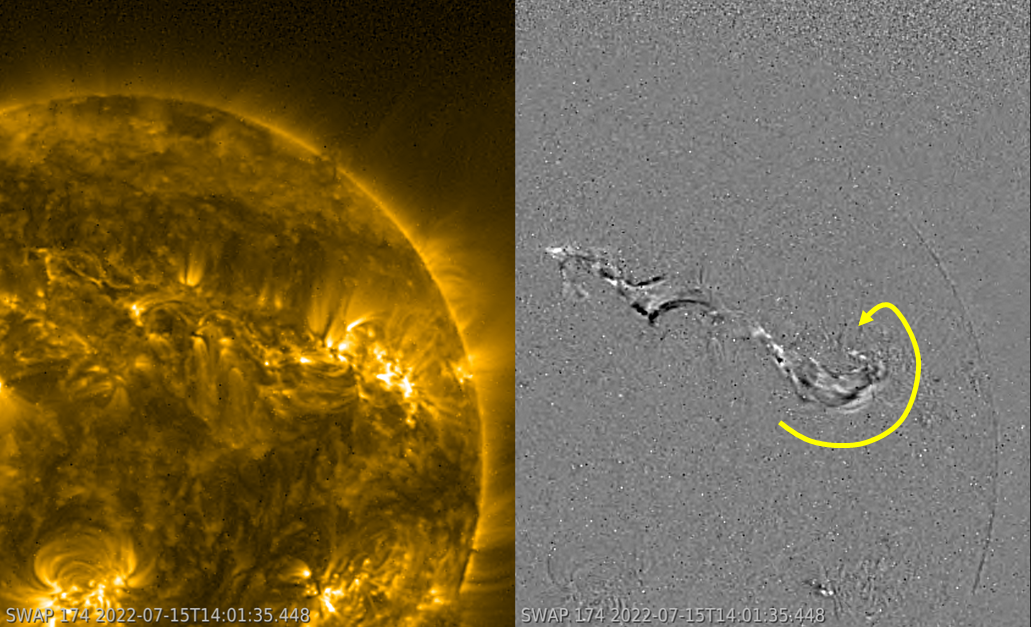
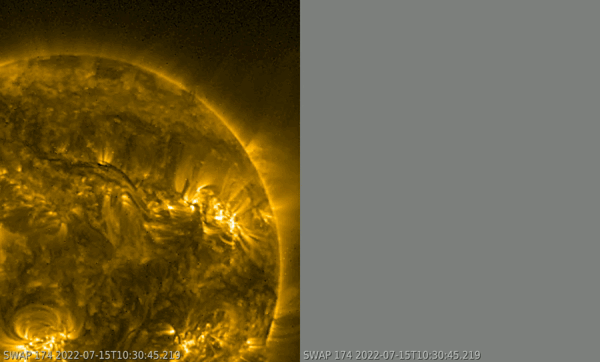
So it was no surprise that a coronal mass ejection (CME) was observed (image underneath). As is evident from coronagraphic difference images by SOHO/LASCO (CACTus) and STEREO-A/COR2, the bulk of this partial halo CME was mostly directed to the north and west, but an earth-directed component could not be excluded. Thus, as its plane-of-the-sky speed was determined by SIDC space weather forecasters to be only around 300 km/s, expectations are that this slow-moving CME will arrive at Earth only late on 19 July or on 20 July.
